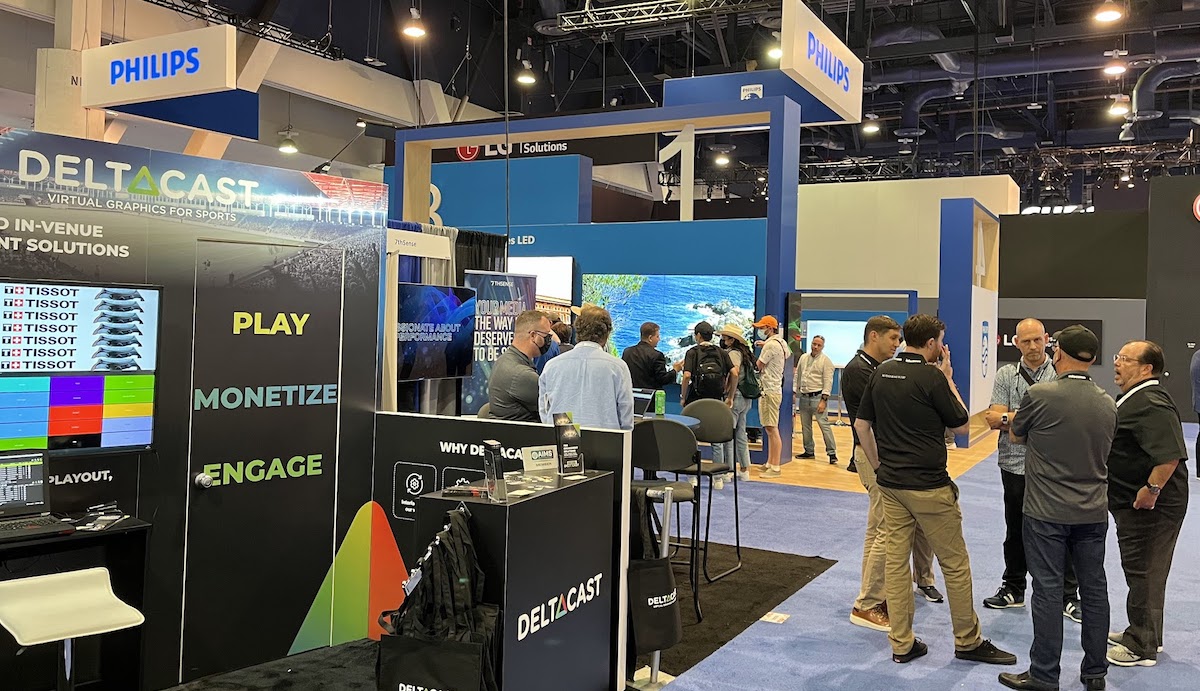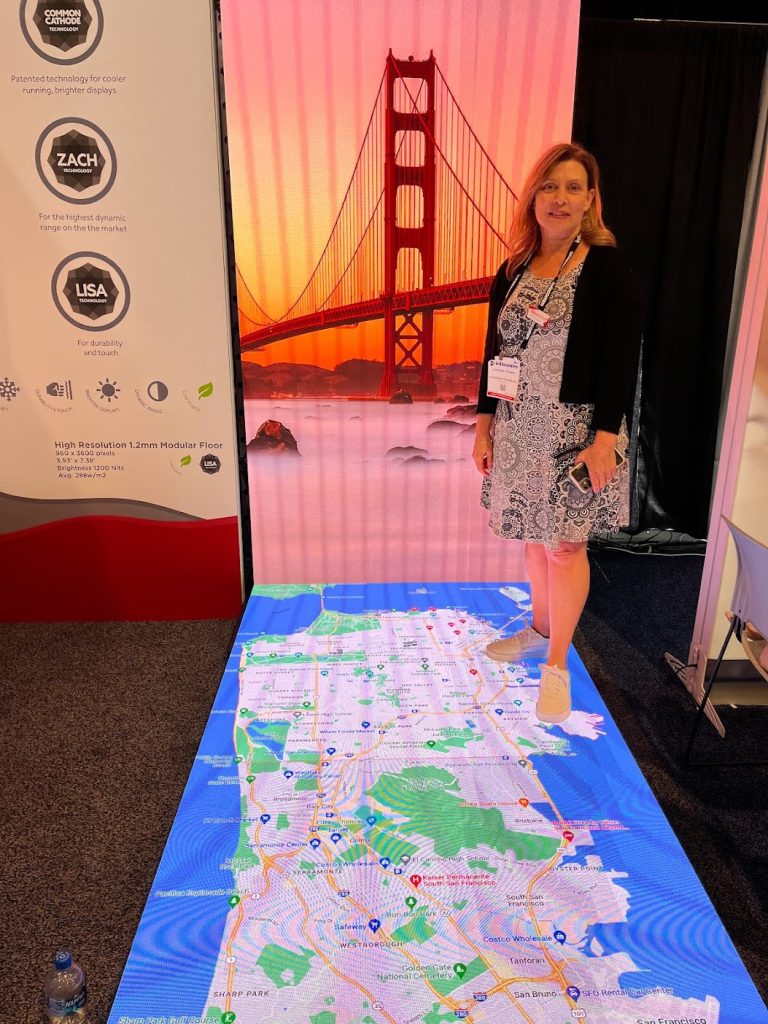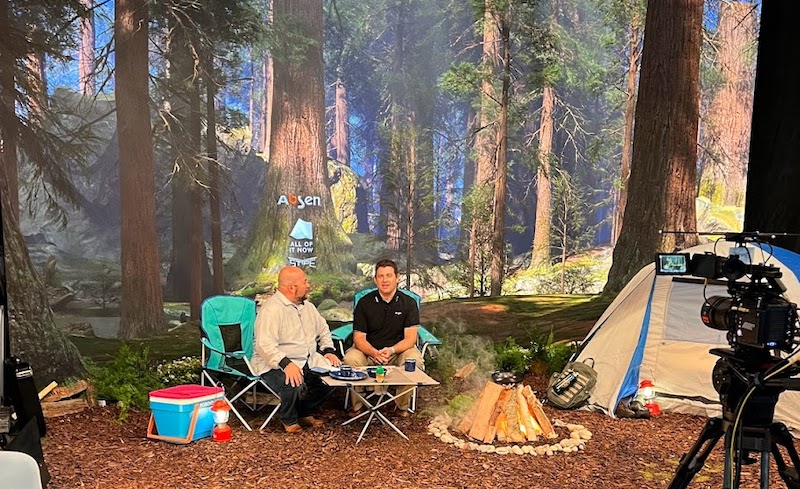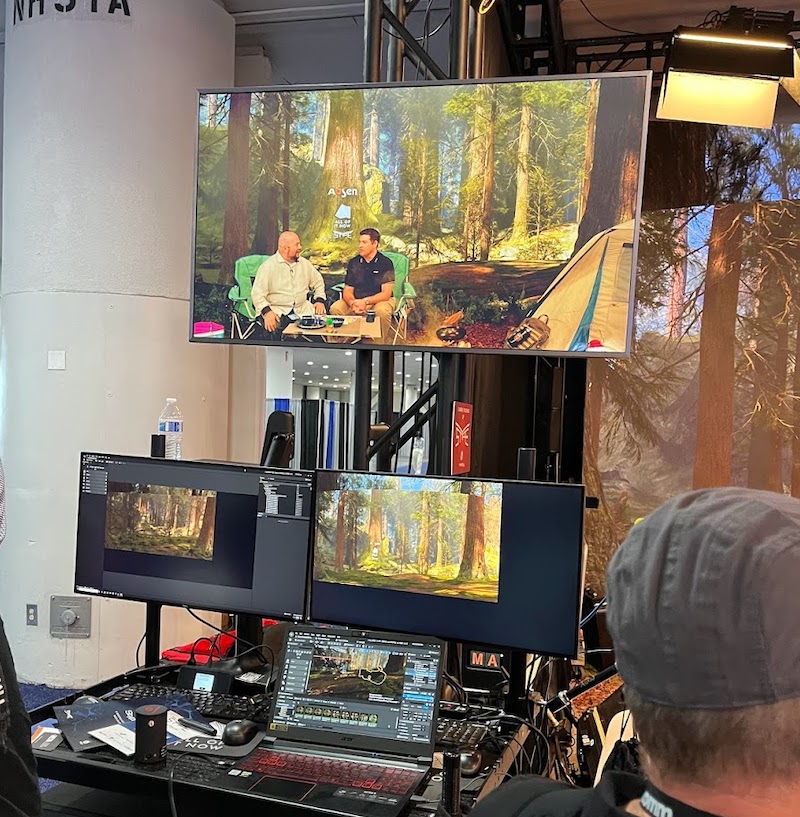
InfoComm Day 2 Impressions … Not Much Truly New, But So What
June 10, 2022 by Dave Haynes
Up early, at the airport, heading home, impressed with my relatively good evening behavior, given the number of vendor parties staged the last few evenings. Only one late nighter.
Day 2 at the pro AV trade show InfoComm looked pretty much like Day 1 – lots of activity, but not what you’d call crowded. I don’t know if the target attendee total will be hit, but I had lotsa chats with people who were happy they came and happy to personally connect as sellers, partners or buyers
I have an informal, totally ad hoc advisory council of industry people who all hot the same shows as me, and have the same experience and trained eye. We bump into each other, start a chat, and it inevitably turns to: “So, have you seen anything new or interesting?”
This week’s consistent answer: “No, not really.”
I agree, but stress a few qualifiers:
- Every company probably has new service offers, and new versions of hardware and software, but these are improvements or new wrinkles, not Never-Before-Seen stuff;
- Much of InfoComm is about Pro AV stuff that has some connective tissue to digital signage, but I spend zero time looking around the audio, cables and gear, and unified communications sections of the trade show floor. I went to West Hall Wednesday morning and didn’t go back again, as it was 99% that other stuff;
- It is wildly unreasonable to expect hardware manufacturers to come up with Never-Before-Seen stuff every year. Light Field Displays, which have hologram qualities, are years away. I was a bit disappointed I only saw one company – LG – marketing transparent LED on film, and surprisingly few examples of transparent mesh LED;
- I did not book any formal meetings – which chew up time – but that means I didn’t get invited into any “whisper rooms” away from the show floor, where vendors show R&D work. I did go through SONY and saw some interesting work.
I focused on the North Hall where the display and software guys are predominantly located, and had lots of chats and observations.
Arguably the most interesting thing I saw was a 1.2mm LED display from SiliconCore – interesting because it was a very fine pitch display meant to walk on. The great, great majority of floor LED products I have seen are lower-rez displays from unfamiliar Chinese manufacturers, intended for dance floors and experiential settings.

I saw SiliconCore – known for premium products – and told them I was puzzled by the company also doing this. They explained it was not for fun – but for very serious applications like military command centers. The product came out of a custom build request for a customer – with the idea that being able to show detailed images and mapping on a floor helped planning and situational awareness. This could be done, as well, with edge-blended projectors, but the people walking around have to deal with shadows that obscure information.
Doing it at 1.2 meters means an average height viewer is seeing the information at a workable distance, given that pixel pitch. I saw a slide that was a San Francisco street map, and it was visually crisp.
There were numerous other manufacturers with floor displays, but they all had substantially coarser pixel pitches and were intended for fun, or as part of film and TV studios and production sets.


Speaking of that, one thing I learned this week is that there is a lot to using fine pitch LEDs as an improvement on green screens. I kinda thought it was a simple case of the shooting live actors in front of a background that could be whatever scene needed, moving or still.
But there is a whole lot going on – with very beefy computers and graphics cards – doing real-time rendering of graphics and adjusting to angles. I saw the camera people, but off to the side of demos there were other people working keyboards and staring at monitors.
I got a lot of clarity on what’s up with PPDS, and will write that up next week. The company has re-aligned the executive team and done some work to harmonize the corporate structure. A friend at PPDS says explaining the roots, evolution and names behind Philips pro displays and TVs is a lengthy conversation, and this recent work should help.
An interesting nugget from Stan Richter of SignageOS, which does middleware that allows a CMS to run on all the “smart” system on chip displays and boxes out there: His team does benchmarking and has tracked that for many years. Back when Sony and then Samsung came out with smart commercial displays, followed by all the others (save NEC), the early iterations were slugs compared to PC-based players. Almost a decade on, SignageOS says the latest generation of these smart displays are just about at performance parity with i5 PCs.
I believe Richter will be presenting a lot of findings in a few weeks in Munich at the Digital Signage Summit.
So … if there wasn’t all that much truly new to see at InfoComm, was it worth the trip. Absolutely. Seeing established technology that is faster, brighter, lighter, easier, cheaper or whatever “er” gets applied is all worthwhile – just hard to write much about. Video wall displays that have JUST a slightly thinner bezel are great, but not great copy for readers.
Philips (PPDS) has a 65-inch narrow bezel video wall display – interesting because most of what’s out there is 55-inch. Not sure I could do an interesting post around that, though.
Many people would have had some sort of mission to see something here, but a lot of those people were just happy to see a pile of people and companies in person. The thing about trade shows is they’re very efficient for everything sourcing tech to doing a lot of customer partner touches in one city, instead of endless flying around.
I know for me it was just great to see people after almost three years, in many cases. Community is important in this and just about any industry.
I knew coming here that the prevailing points of view are that the pandemic is over, or no longer all that worrisome. Masks usage was rare on the exhibit hall floor, and particularly rare (and admittedly difficult) at after-hours social events. By Thursday I was already hearing stories of positive rapid tests and people isolating in hotel rooms so they didn’t spread to other staff working at stands.
So far, so good for me … but my nostrils will be getting a good workout from test swabs for the next few days.
If you are still at the show (it closes this afternoon), enjoy. Safe travels home.
The next industry trade show of note in North America is Digital Signage Experience, back in Las Vegas in November. I confirmed with a person from the show that it is all-systems-go on that. The exhibitor count is not all that high, but my gut tells me a lot of vendors have much shorter than normal planning windows, because of all of the volatility COVID has introduced.



Leave a comment